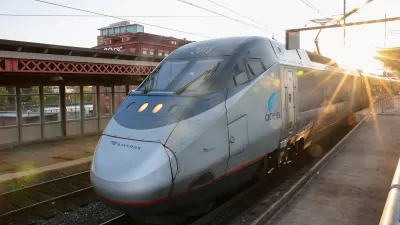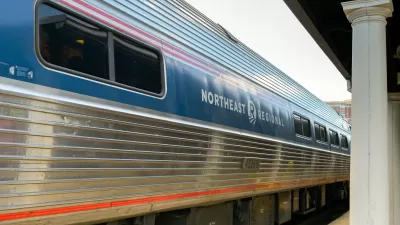With a flurry of ambitious, and big ticket, proposals unveiled over the past three weeks, chronically under-budgeted Amtrak is shifting its strategy in the hopes of proving its potential worth.
With recent proposals to renovate Washington's Union Station at a cost of $7 billion and bring high-speed rail to the Northeast Corridor for a measly $151 billion, Amtrak doesn't seem so dowdy any longer.
In an audacious strategy, Amtrak, "which got a $1.4 billion federal subsidy this year and needs congressional reauthorization to continue operations past September 2013," has liberated itself from the minor inconveniences of begging for funds to keep rolling every year, in the hopes of proving its potential long-term value.
"It's an aggressive strategy to put themselves in a better negotiating position," said Joshua Schank, president and chief executive officer of the Eno Center for Transportation, a Washington research group. "Rather than playing defense and asking for a little bit of money so they just don't die, they're saying, ‘Here's what we could accomplish if we really get some money.'"
Detractors argue for a free market solution to American passenger rail. "A better solution would open up Amtrak routes to competitive bidding to lower costs," says the author summarizing Emily Goff of the Heritage Foundation.
The $151 billion high-speed rail plan includes both, with government funding expected to attract private investment. Amtrak hopes ambitious plans can attract sovereign wealth funds that are increasingly looking for ways to invest in U.S. transportation projects, notes Plungis.
Thanks to Andrew Gorden
FULL STORY: Amtrak Shifts Strategy From Begging for Money to Thinking Big

Alabama: Trump Terminates Settlements for Black Communities Harmed By Raw Sewage
Trump deemed the landmark civil rights agreement “illegal DEI and environmental justice policy.”

Planetizen Federal Action Tracker
A weekly monitor of how Trump’s orders and actions are impacting planners and planning in America.

The 120 Year Old Tiny Home Villages That Sheltered San Francisco’s Earthquake Refugees
More than a century ago, San Francisco mobilized to house thousands of residents displaced by the 1906 earthquake. Could their strategy offer a model for the present?

In Both Crashes and Crime, Public Transportation is Far Safer than Driving
Contrary to popular assumptions, public transportation has far lower crash and crime rates than automobile travel. For safer communities, improve and encourage transit travel.

Report: Zoning Reforms Should Complement Nashville’s Ambitious Transit Plan
Without reform, restrictive zoning codes will limit the impact of the city’s planned transit expansion and could exclude some of the residents who depend on transit the most.

Judge Orders Release of Frozen IRA, IIJA Funding
The decision is a victory for environmental groups who charged that freezing funds for critical infrastructure and disaster response programs caused “real and irreparable harm” to communities.
Urban Design for Planners 1: Software Tools
This six-course series explores essential urban design concepts using open source software and equips planners with the tools they need to participate fully in the urban design process.
Planning for Universal Design
Learn the tools for implementing Universal Design in planning regulations.
Clanton & Associates, Inc.
Jessamine County Fiscal Court
Institute for Housing and Urban Development Studies (IHS)
City of Grandview
Harvard GSD Executive Education
Toledo-Lucas County Plan Commissions
Salt Lake City
NYU Wagner Graduate School of Public Service





























